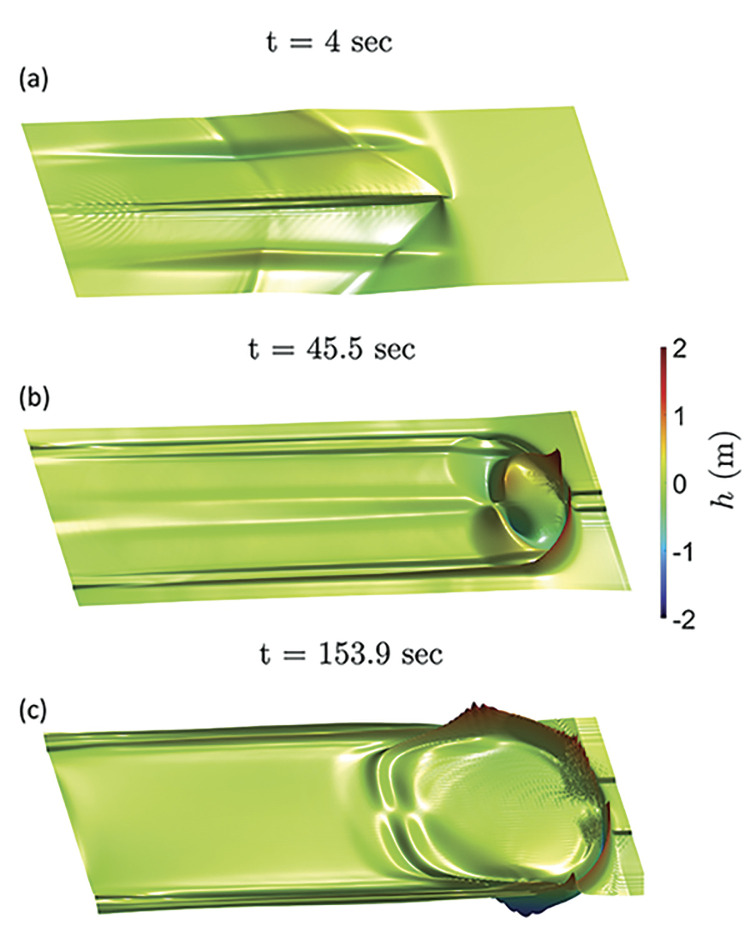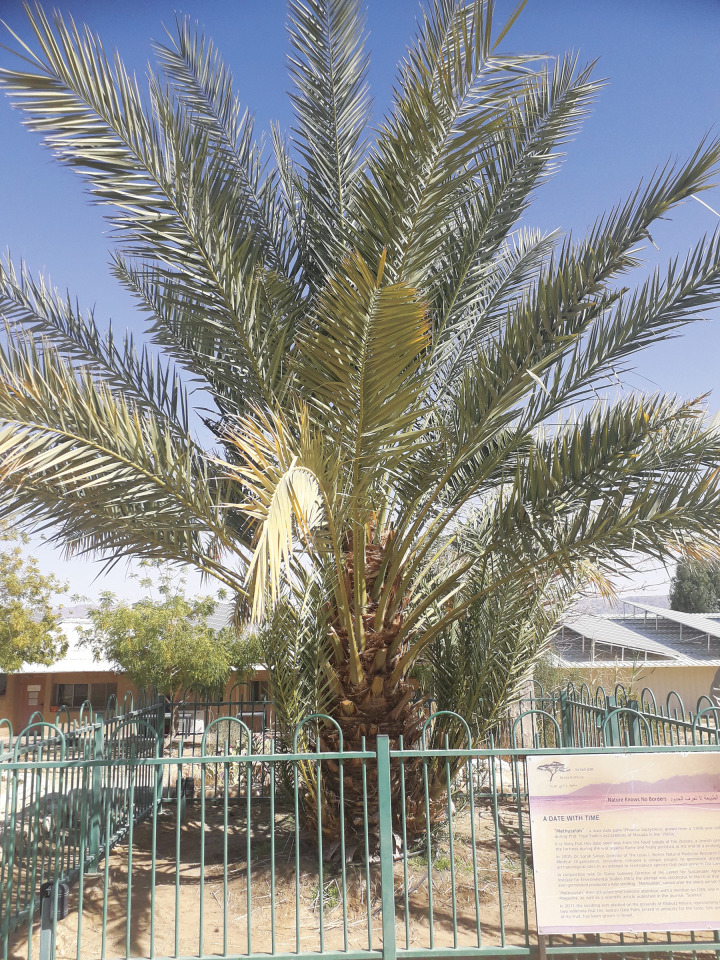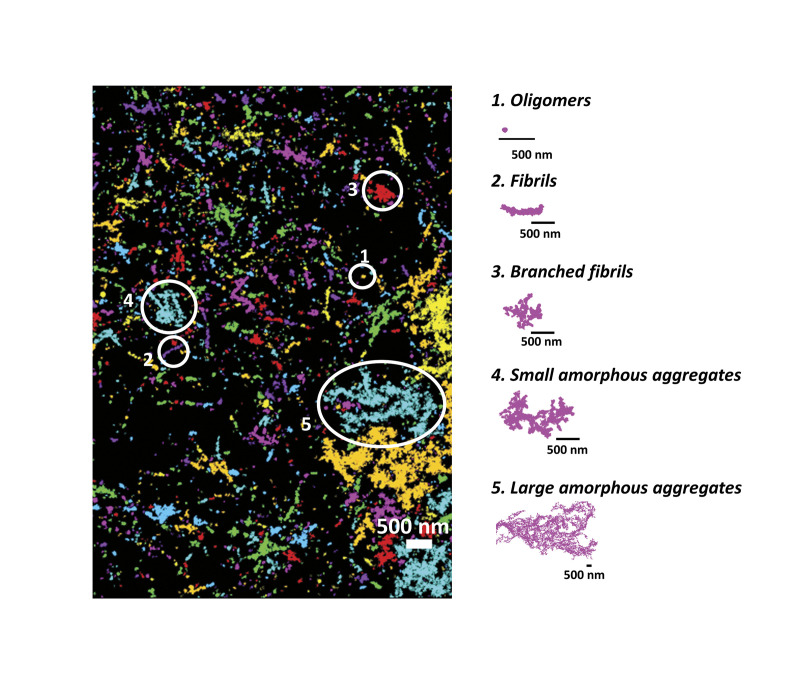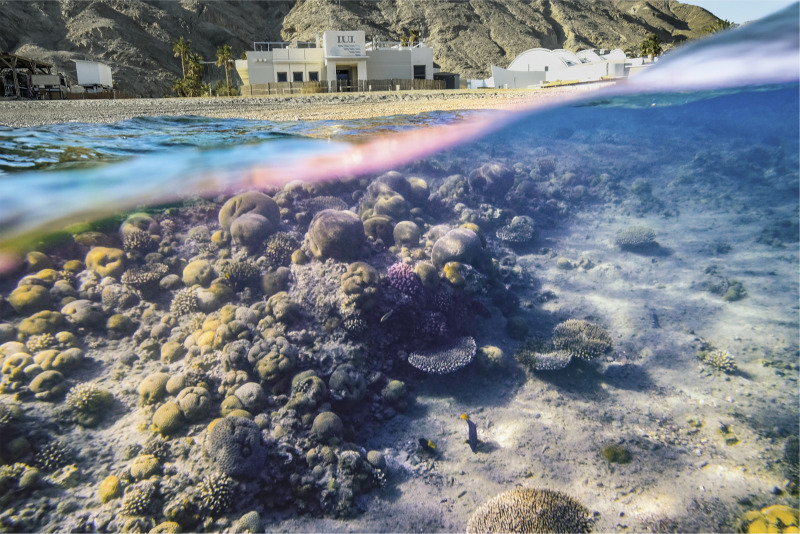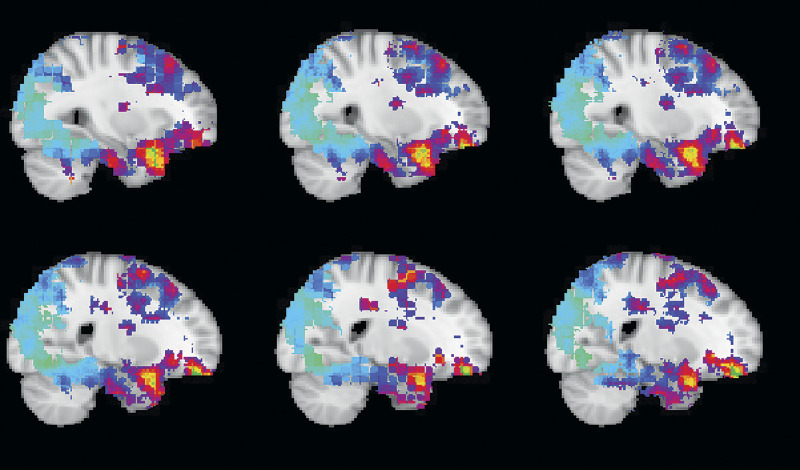EARTH, ATMOSPHERIC, AND PLANETARY SCIENCES
Evolution of an earthquake-induced tsunami in a bay traversed by a strike-slip fault. Colors indicate sea-surface height relative to an undisturbed water level; wave height may exceed 2 m in some places. Top: Instantaneous tsunami generation phase coincident with earthquake propagation; Middle: postseismic tsunami generation phase in which gravity-driven tsunami waves dominate; Bottom: backward propagation of large wave fronts reflected from bay tip.
Strike-slip fault tsunami generation
Large tsunamis are generally attributed to earthquakes on normal and thrust faults that produce substantial vertical seafloor displacements, such as the magnitude 9.0 2011 Tohoku-Oki event. Through modeling, Ahmed Elbanna et al. found that earthquakes on strike-slip faults, which occur when two sides of a fault scrape along each other, can cause tsunamis in shallow bays even in the absence of vertical displacement from an undersea landslide. The authors developed a computational framework combining earthquake rupture dynamics with models of tsunami generation and propagation. The framework revealed that large horizontal displacements associated with strike-slip faulting can deform the depth contours of bays by horizontally pulling and pushing coastal slopes. The deformation leads to the displacement of water in the vertical direction and initiation of tsunami waves. The authors hypothesized that faults nearest to the shore and either traversing the bay or angling toward the coastline present the biggest hazard. Additionally, an apex at the bay’s tip also increases the tsunami hazard. According to the authors, this tsunami generation mechanism may be a previously unrecognized hazard for coastal cities worldwide, and tsunami risk in areas near bays traversed by faults should be revisited. — T.H.D.
EVOLUTION
Methuselah, a Judean date palm tree analyzed in the study.
Resurrecting Judean date palms
Resurrection genomics aims to answer questions about past and possibly extinct populations by reviving biological material through mechanisms such as germinating ancient seeds. Thirty-five Judean date palm seeds excavated from archaeological sites in the southern Levant had previously been planted, and seven seeds dating from between the 4th century BCE and the 2nd century CE successfully germinated and grew. Muriel Gros-Balthazard et al. sequenced the genomes of these ancient date palms and compared the sequences to those of modern varieties. The authors found that seeds older than the 1st century BCE were related to modern West Asian varieties. Seeds beginning in the 2nd century BCE showed a genetic resemblance to modern North African populations, with evidence of hybridization between the date palm Phoenix dactylifera and the wild Cretan palm Phoenix theophrasti, resulting in introgression of parts of the wild Cretan palm genome into cultivated date palms. The results suggest that the hybridization of Cretan with Judean date palms had begun by around 2,200 years ago. Other genetic evidence suggests that the Judean date palms had high fructose and glucose levels and may have produced both yellow and red fruits. According to the authors, the results show how resurrection genomics can provide insight into the crop evolution and illuminate agricultural practices. — P.G.
NEUROSCIENCE
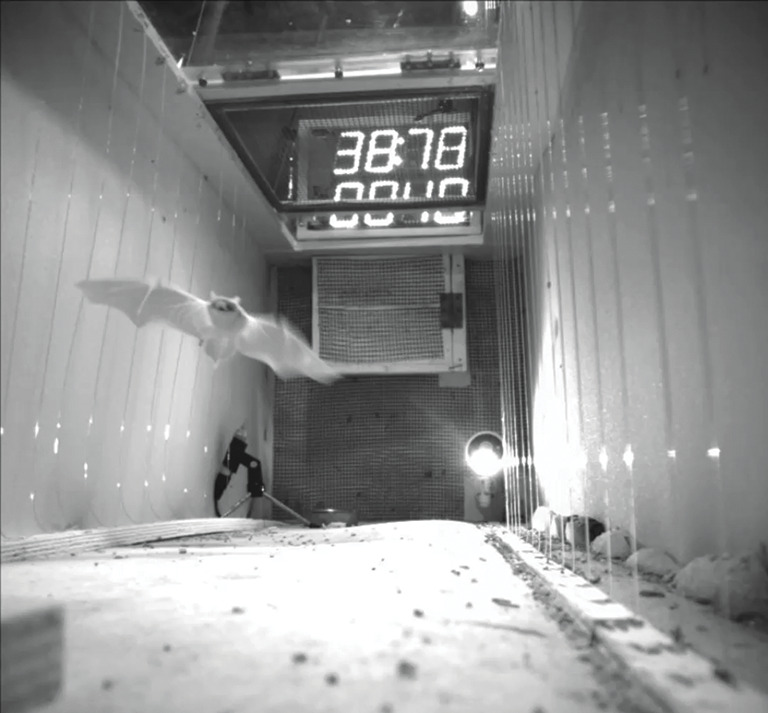
An adult bat (Pipistrellus kuhlii) flying from its perch to the target.
Distance perception in echolocating bats
Many bat species use echolocation—emitting sound signals and analyzing the returning echoes—to assess their distance from an object. However, it is unclear whether translating a signal-to-echo delay into distance is an innate or learned behavior. Eran Amichai and Yossi Yovel reared 11 Pipistrellus kuhlii bat pups from birth to the age of independent flight. Because sound propagates faster in helium-enriched air than in normal air, pups were reared in conditions with either normal air or helium-enriched conditions that provided 15% increased speed of sound. Pups were trained to eat from targets up to 130 cm away from their perch. Durations and intervals of bats’ calls revealed how far bats estimated their distance from targets. Pups reared with helium-enriched air underestimated target distances, as did pups reared with normal air when exposed to helium-enriched air. However, the closer pups were to targets, the more accurately they assessed target distances. The authors also trained eight wild-caught adult bats to eat from targets and exposed them to various speeds of sound, increased by up to 27%. All adult bats underestimated target distances, and accuracy did not improve with time. The findings suggest that time perception in echolocating bats is innate, and bats discern their surroundings in terms of time rather than space, according to the authors. — M.S.
CELL BIOLOGY
False-color-coded superresolution image showing various types of tau aggregates in an engineered cell model of FTDP-17.
Characterizing tau in intact cells at nanoscale spatial resolution
Tau is a microtubule-associated protein mainly expressed in neurons, and accumulation of tau into insoluble aggregates is a hallmark of several neurodegenerative diseases, including Alzheimer’s Disease (AD) and Frontotemporal Dementia with Parkinsonism linked to chromosome 17 (FTDP-17). The lack of quantitative, high-resolution tools has made it difficult to discriminate between physiological tau and small, soluble pathological tau aggregates within cells. Using quantitative superresolution microscopy, Melina Gyparaki et al. found that under physiological conditions in neurons and nonaggregated conditions in engineered cell lines, tau was mainly microtubule associated and consisted of small tau complexes, including monomers, dimers, and trimers. The tau oligomers were distinct from tau aggregates formed in a cell model of FTDP-17, which included a variety of larger tau aggregates that together disrupted the integrity of the microtubule network. The authors used antibodies that recognize different tau phosphorylation states and shape classification methods based on machine learning to show that different tau phosphorylation states were associated with distinct tau aggregate species. The results indicate that endogenous tau can form small oligomers under not only pathological conditions but also physiological conditions in neurons. According to the authors, the findings suggest that large pathological tau oligomers are distinct from small physiological tau oligomers and could potentially be targeted in drug screens. — S.R.
ENVIRONMENTAL SCIENCES
Dietary breadth since the advent of industrial agriculture
The carbon and nitrogen isotope composition of human tissues can provide clues to past and present diets and food webs. To directly compare the diets of modern and ancient humans, Michael Bird et al. collated isotope compositions of collagen, hair, and nail keratin from three populations dating to before and after the manufacture of industrial fertilizer in 1910. The authors converted the data to a common reference frame termed modern diet equivalent (MDE) isotope (δ13CMDE and δ15NMDE) values. For modern individuals consuming a traditional subsistence diet, δ13CMDE values ranged from –30.1 to –11.7‰, and δ15NMDE values ranged from –1.8 to +15.1‰. These values imply a diverse diet covering multiple trophic levels and largely overlap with those from samples dating to before 1910. By contrast, tissue from modern urban individuals consuming a globalized diet had δ13CMDE values ranging from –24.2 to –18.7‰ and δ15NMDE values ranging from +0.45 to +5.7‰. According to the authors, the compression of dietary breadth by two-thirds for most modern human populations may be due to the rise of industrialized agriculture and animal husbandry practices as well as the globalization of food distribution networks. — J.W.
EVOLUTION
Corals in the Gulf of Aqaba and the northern Red Sea have shown exceptional resilience to heat stress.
Thermal resilience of Red Sea corals
Warming ocean temperatures have damaged coral reefs worldwide through coral bleaching and mortality, but the corals of the northern Red Sea and the Gulf of Aqaba have remained unaffected. Romain Savary et al. exposed the Stylophora pistillata coral organism from the Gulf of Aqaba to temperatures ranging from 27 to 34.5 °C at timescales of hours to weeks. At temperatures up to 32 °C, both the coral host and its symbiotic algae experienced rapid and pervasive changes in gene expression but quickly returned to nearly baseline gene expression following a heat stress recovery period. At 34.5 °C, however, recovery to baseline gene expression was minimal, the coral experienced widespread mortality, and the composition of the coral community microbiome shifted toward opportunistic bacteria, suggesting that 34.5 °C is above the lethal limit for S. pistillata. According to the authors, although the corals of the northern Red Sea and the Gulf of Aqaba are unlikely to experience temperatures up to 32 °C within this century, their resilient gene expression and acclimation potential enhance their chances of survival in a warming world. — P.G.
NEUROSCIENCE
Vertical slices of the brain, imaged at different locations, reveal a timescale gradient for anticipation. Timescales are short at the back of the brain (cool blues) and longer at the front (warm reds). Image credit: Christopher Baldassano.
Several brain regions help us anticipate what’s going to happen next
Posted on April 30, 2021
Amy McDermott
If you watch a movie clip on repeat, many areas of your brain begin to anticipate upcoming events onscreen, according to a recent study published in eLife. The first time you see the clip, your brain forms a distinctive neural pattern. Then, as you become familiar with the clip on subsequent viewings, that neural pattern shifts earlier, demonstrating some level of expectation as to what’s coming next. The findings speak to more than just how we react to repeat viewings of The Grand Budapest Hotel (the film used in this study). They could inform thinking about how the human brain is organized.



